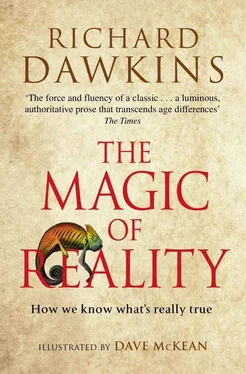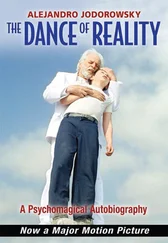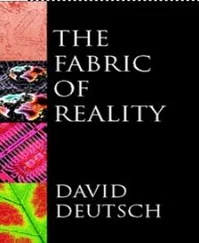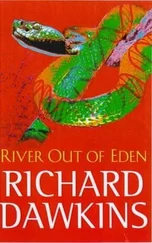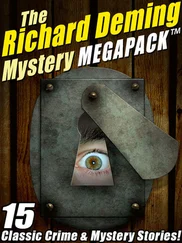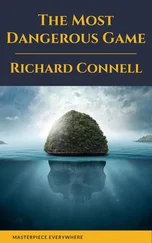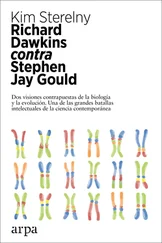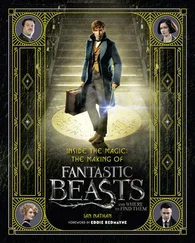Richard Dawkins
THE MAGIC OF REALITY
How We Know What’s Really True
Illustrated by Dave McKean
Clinton John Dawkins
1915–2010
O, my beloved father
1. WHAT IS REALITY? WHAT IS MAGIC?

REALITY IS EVERYTHING that exists. That sounds straightforward, doesn’t it? Actually, it isn’t. There are various problems. What about dinosaurs, which once existed but exist no longer? What about stars, which are so far away that, by the time their light reaches us and we can see them, they may have fizzled out?
We’ll come to dinosaurs and stars in a moment. But in any case, how do we know things exist, even in the present? Well, our five senses – sight, smell, touch, hearing and taste – do a pretty good job of convincing us that many things are real: rocks and camels, newly mown grass and freshly ground coffee, sandpaper and velvet, waterfalls and doorbells, sugar and salt. But are we only going to call something ‘real’ if we can detect it directly with one of our five senses?
What about a distant galaxy, too far away to be seen with the naked eye? What about a bacterium, too small to be seen without a powerful microscope? Must we say that these do not exist because we can’t see them? No. Obviously we can enhance our senses through the use of special instruments: telescopes for the galaxy, microscopes for bacteria. Because we understand telescopes and microscopes, and how they work, we can use them to extend the reach of our senses – in this case, the sense of sight – and what they enable us to see convinces us that galaxies and bacteria exist.
How about radio waves? Do they exist? Our eyes can’t detect them, nor can our ears, but again special instruments – television sets, for example – convert them into signals that we can see and hear. So, although we can’t see or hear radio waves, we know they are a part of reality. As with telescopes and microscopes, we understand how radios and televisions work. So they help our senses to build a picture of what exists: the real world – reality. Radio telescopes (and X-ray telescopes) show us stars and galaxies through what seem like different eyes: another way to expand our view of reality.
Back to those dinosaurs. How do we know that they once roamed the Earth? We have never seen them or heard them or had to run away from them. Alas, we don’t have a time machine to show them to us directly. But here we have a different kind of aid to our senses: we have fossils, and we can see them with the naked eye. Fossils don’t run and jump but, because we understand how fossils are formed, they can tell us something of what happened millions of years ago. We understand how water, with minerals dissolved in it, seeps into corpses buried in layers of mud and rock. We understand how the minerals crystallize out of the water and replace the materials of the corpse, atom by atom, leaving some trace of the original animal’s form imprinted on the stone. So, although we can’t see dinosaurs directly with our senses, we can work out that they must have existed, using indirect evidence that still ultimately reaches us through our senses: we see and touch the stony traces of ancient life.
In a different sense, a telescope can work like a kind of time machine. What we see when we look at anything is actually light, and light takes time to travel. Even when you look at a friend’s face you are seeing them in the past, because the light from their face takes a tiny fraction of a second to travel to your eye. Sound travels much more slowly, which is why you see a firework burst in the sky noticeably earlier than you hear the bang. When you watch a man chopping down a tree in the distance, there is an odd delay in the sound of his axe hitting the tree.
Light travels so fast that we normally assume anything we see happens at the instant we see it. But stars are another matter. Even the sun is eight light-minutes away. If the sun blew up, this catastrophic event wouldn’t become a part of our reality until eight minutes later. And that would be the end of us! As for the next nearest star, Proxima Centauri, if you look at it in 2012, what you are seeing is happening in 2008. Galaxies are huge collections of stars. We are in one galaxy called the Milky Way. When you look at the Milky Way’s next-door neighbour, the Andromeda galaxy, your telescope is a time machine taking you back two and a half million years. There’s a cluster of five galaxies called Stephan’s Quintet, which we see through the Hubble telescope spectacularly colliding with each other. But we see them colliding 280 million years ago. If there are aliens in one of those colliding galaxies with a telescope powerful enough to see us, what they are seeing on Earth, at this very moment, here and now, is the early ancestors of the dinosaurs.
Are there really aliens in outer space? We’ve never seen or heard them. Are they a part of reality? Nobody knows; but we do know what kind of things could one day tell us if they are. If ever we got near to an alien, our sense organs could tell us about it. Perhaps somebody will one day invent a telescope powerful enough to detect life on other planets from here. Or perhaps our radio telescopes will pick up messages that could only have come from an alien intelligence. For reality doesn’t just consist of the things we already know about: it also includes things that exist but that we don’t know about yet and won’t know about until some future time, perhaps when we have built better instruments to assist our five senses.
Atoms have always existed, but it was only rather recently that we became sure of their existence, and it is likely that our descendants will know about many more things that, for now, we do not. That is the wonder and the joy of science: it goes on and on uncovering new things. This doesn’t mean we should believe just anything that anybody might dream up: there are a million things we can imagine but which are highly unlikely to be real – fairies and hobgoblins, leprechauns and hippogriffs. We should always be open-minded, but the only good reason to believe that something exists is if there is real evidence that it does.
Models: testing our imagination
There is a less familiar way in which a scientist can work out what is real when our five senses cannot detect it directly. This is through the use of a ‘model’ of what might be going on, which can then be tested. We imagine – you might say we guess – what might be there. That is called the model. We then work out (often by doing a mathematical calculation) what we ought to see, or hear, etc. (often with the help of measuring instruments) if the model were true. We then check whether that is what we actually do see. The model might literally be a replica made out of wood or plastic, or it might be a piece of mathematics on paper, or it might be a simulation in a computer. We look carefully at the model and predict what we ought to see or hear, etc. if the model were correct. Then we look to see whether the predictions are right or wrong. If they are right, this increases our confidence that the model really does represent reality; we then go on to devise further experiments, perhaps refining the model, to test the findings further and confirm them. If our predictions are wrong, we reject the model, or modify it and try again.
Читать дальше
